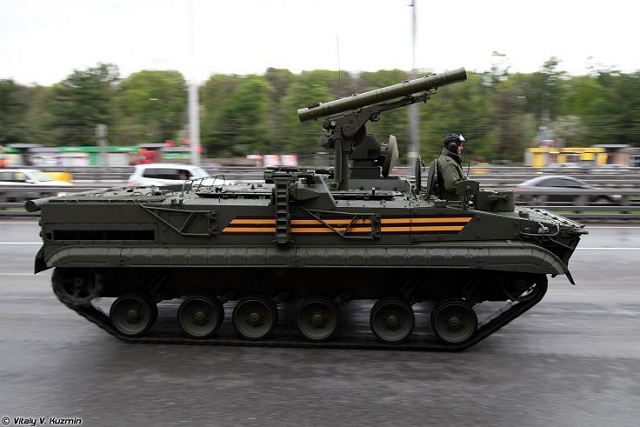|
|
|||
|
Defence & Security News - Russia / UAE
|
|||
|
|
|||
| Russia and UAE to sign a contract for the delivery of Khrizantema-S anti-tank missile. | |||
|
Russia and the United Arab Emirates (UAE) are set to sign a contract on the delivery of Russia’s unique self-propelled antitank system Khrizantema-S; pre-contractual works are currently underway, according to the chief designer of the company which developed the weapons.
|
|||
|
|
|||
 Russia army BMP-3 Khrizantema-S armoured carrier anti-tank missile Russia army BMP-3 Khrizantema-S armoured carrier anti-tank missile |
|||
|
|
|||
|
“Why has Khrizantema-S attracted the attention of our Emirati colleagues? It’s the world’s only antitank system capable of finding targets without optical visibility and destroying tanks of any type, including advanced models with dynamic armor,” explained Valery Kashin, the Kolomna Instrument Manufacturing Design Bureau's chief designer. The Bureau, located near Moscow, developed and manufactured the system.
The Khrizantema BMP-3 (Russian name 9P157-2) based tank destroyer has been developed under the leadership of the KBM Engineering Design Bureau in Moscow and was announced for the first time in 1996. The KBM Khrizantema BMP-3 tank destroyer was first seen in public during an air show in Moscow in late 1999 and at that time it remained at the prototype stage. The Khrizantema 9M123 is a Russian anti-tank missile. The 9M123 (NATO code AT-15 Springer) missile itself is supersonic, flying at an average speed of 400 m/s or Mach 1.2 and a range of between 400 and 6000 meters. Propulsion is by way of a single solid fuel rocket motor with two exhausts on either side of the missile. The manufacturer claims that three 9P157-2 tank destroyers are able to engage 14 attacking tanks and destroy at least sixty percent of the attacking force. The dual guidance system ensures protection against electronic countermeasures and operation in all climatic conditions, day or night. |
|||
Russia and UAE to sign a contract for the delivery of Khrizantema-S anti-tank missile 11706151
- Posted On














